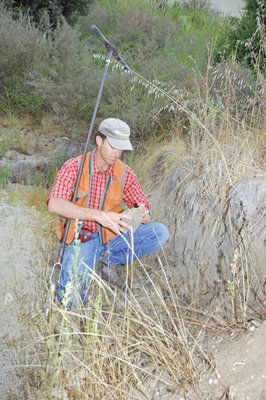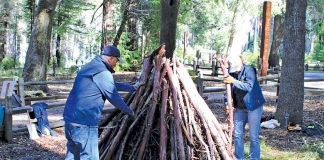
“The state soil of New York is named for the place where a man lost his finger to a rattlesnake. The finger lays quiet in the ground,” writes Aimee Nezhukumatathil. “The snake’s great-great-grandsnakes still chitter through this soil.”
Reading her sensual essay, “The Soils I Have Eaten,” I began to wonder whether California had a state soil, too.
The California story lacks the drama and tragedy of New York, but it serves as an example of what a small group of people can accomplish if they have the determination.
In 1997, Madera School teacher Alex Lehman decided that getting their native soil, San Joaquin Valley soil, declared the official state soil would be a great project for his eighth-grade science students.
After considerable research on why their soil should be chosen, the group found a senator willing to sponsor a bill. They had to visit the state Legislature twice and be subjected to the ugly underbelly of partisan politics, but the students finally celebrated the passage of their bill.
So what makes my pickax-resistant clay soil in Boulder Creek different from other soils, like the San Joaquin?
“I could talk about soils all day,” says Andrew Brownstone, president of BioSphere Consulting, who grew up in Scotts Valley. “The important thing to remember is that the underlying bedrock determines the kind of soil you have. In Santa Cruz County, we have diverse geology, so we have diverse soils.”
“Loam is composed of sand, silt and clay,” Brownstone explains.
Fifteen million years ago, a vast shallow sea covered our region and emptied into the Pacific. Some of the marine sediment formed Scotts Valley’s bedrock, the Santa Margarita sandstone. “That’s why it’s so sandy,” he says.
Many areas of the San Lorenzo Valley watershed sit on shale and mudstone, creating soils with a higher clay component.
“The upper 16 inches of soil is full of billions of beneficial microbes. Gophers, slugs, bugs and other critters increase soil aeration and do a better job of water filtration than a city does. It’s this soil that gets scraped off or compacted when heavy machinery comes on your property,” says Brownstone, who is an engineering geologist and wastewater system designer.
He advises people to identify and fence off areas they want to preserve before construction begins. “In a heartbeat, soil can be lost that will take a thousand years to regenerate,” he says.
Have we lost our relationship with the soil? When I get dirt under my nails, it is usually from ripping through the packaging of store-bought organic potting soil and compost hauled in from parts unknown.
Most of the time, I do not get down and dirty and eyeball-to-eyeball with the soil the way Scarlett O’Hara did in “Gone with the Wind.” Looking out over her plantation, she saw how Union soldiers had destroyed the rich farmlands of the South in their march to the sea.
Out of incredible hunger and rage, she bent down and pulled out a remaining radish from the field. Wiping off the red Georgia clay, she gnawed on it, and, gagging, cried out, “As God is my witness, I’ll never be hungry again!”
Actually, the scene was filmed at sunrise in the San Fernando Valley, so remember when you see the movie again: That was good old California soil she was eating.
Carol Carson is an environmental activist who writes a regular nature column for the Press-Banner. She has been a docent at Henry Cowell Redwoods State Park and taught courses on Big Basin State Park for UCSC Extension. She can be reached at ca****@*********on.com.










